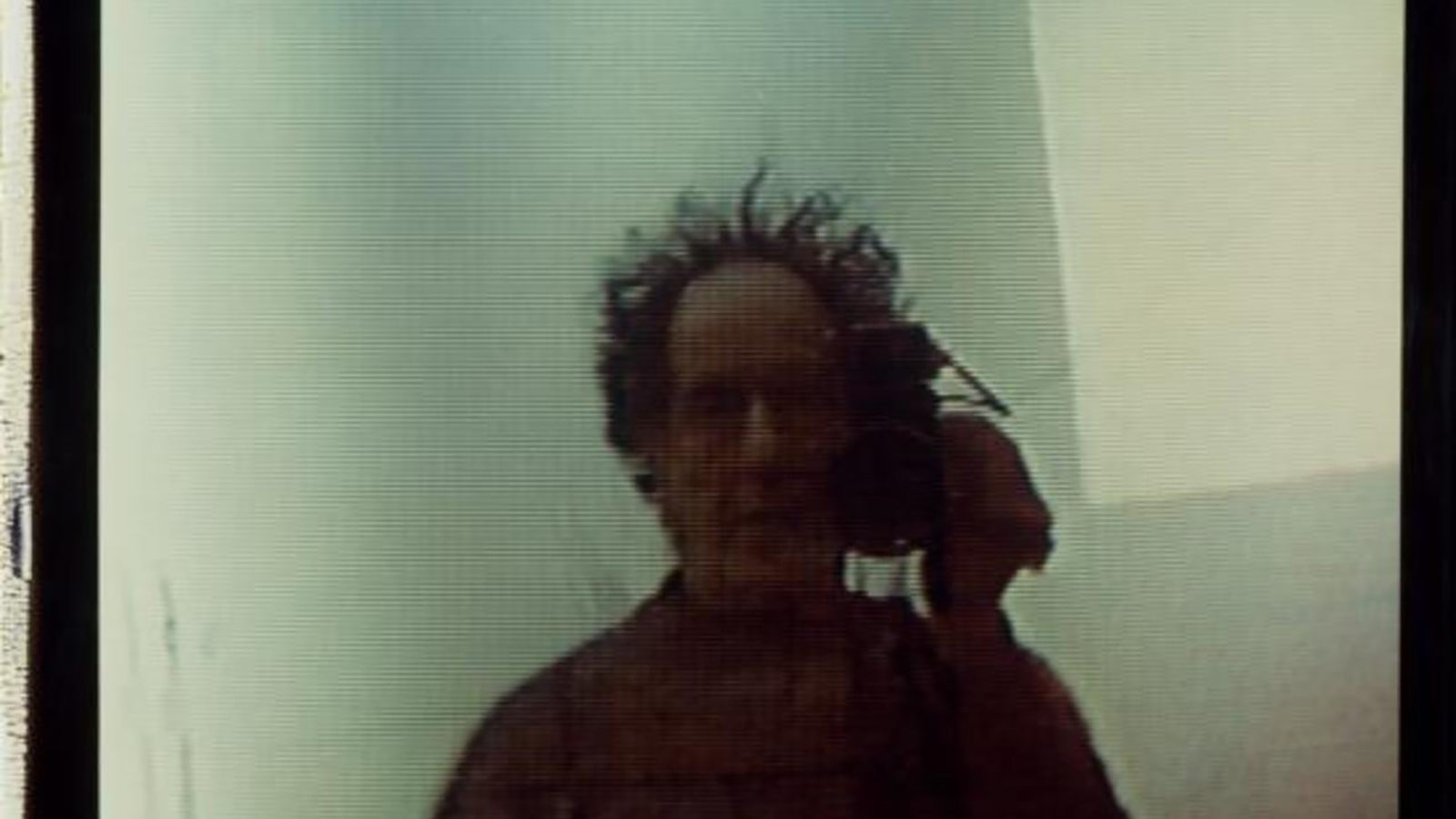
Highway 61 Revisited: Robert Frank
I’d like to make a film which would mingle the private aspects of my life with my work, which is public by definition...how the two poles of this dichotomy join, interlace, are at variance, and fight each other, as much as they complement each other...
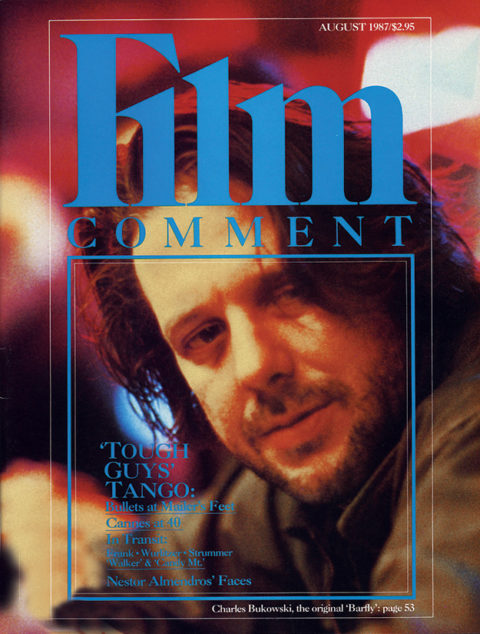
Two houses. Two countries. Two points of view. One is outside cultural life, the other right in it. One is the other’s refuge. Both are at the same time necessary and useless…
I’d like to make that film.–Robert Frank (Pantheon Photo Library, 1983)
In China, it is the Year of the Rabbit. In film, it may be remembered as the year of the phoenix. Once recognized, now underground, poets of literature, photography, film, and music will rise centerstage with upcoming films. Bob Dylan will appear as an older but wiser musician in Hearts of Fire (1987); cult poet Charles Bukowski goes public as screenwriter of Barbet Schroeder’s Barfly (1987); The Clash’s Joe Strummer will appear in Alex Cox’s Straight to Hell (1987) and Walker (1987), which was written by Rudy Wurlitzer (screenwriter for Pat Garrett and Billy the Kid, 1973), who himself returns, along with Robert Frank, as co-director of Candy Mountain (1988). Perhaps no artist more than Robert Frank typifies this phoenix-like rise from the ashes. At the apex of his photography career, Frank put his still camera away and converted his eye to filmmaking, directing several personal films which were followed mostly by those already familiar with his still work. With Candy Mountain, however, Frank reaches for a wider audience in a four-wheeled film quest that strikes images from his own life.
Robert Frank first hit the road when he emigrated from his native Switzerland to New York in 1950 as a fashion photographer. In 1955, he traveled the American asphalt as a Guggenheim fellow for photography and the resulting book of stills, The Americans, published in 1958, gained him both fame and infamy. Woven throughout the black and white photos are images of American flags, graves, jukeboxes, cars, political and religious icons, and the road itself. By the critics, he was condemned for his “joyless,” “disillusioned,” and especially “anti-American” photographs that depicted America and its citizens from New York to the Deep South to the West. Yet, by photographers, he was hailed and then imitated for his spontaneous and poetic style, which looked outward upon America while, at the same time, revealed Frank looking inward upon himself. Some of the photographs have since become so well known—in one photo, a black nursemaid holds a privileged white baby in South Carolina, while in another, people stare blankly from a trolley car in New Orleans—that they themselves have become American icons.
It would be the last project for which Frank considered himself a photographer. Film, where he found a “kinship in the negative,” became the next logical step for him. A diary entry at that time states: “1960. A decision: I put my Leica in a cupboard. Enough of lying in wait, pursuing, sometimes catching the essence of the black and the white, the knowledge of where God is. I make films. Now I speak to the people who move in my viewfinder” (Pantheon Photo Library, 1983).
The first film to earn Frank a reputation as a filmmaker was Pull My Daisy (1959), made with a traveling companion from The Americans journey, Jack Kerouac, as well as other Beat and artist friends: Allen Ginsberg, Peter Orlovsky, Gregory Corso, and Alice Neel. With a voiceover by Kerouac, the unscripted film continued the same spontaneous and poetic style of Frank’s photographs while also utilizing many of the same themes of music, religion, power, and the American flag.
With Ginsberg’s participation, Frank made another film, Me and My Brother (1968), about Orlovsky’s institutionalized brother, Julius. He continued to make more films (among them Conversations in Vermont, 1969; and About Me: A Musical, 1971) and in 1972, at the invitation of the Rolling Stones, Frank went on the road again as part of the Stones’ American tour, which he filmed with assistant Danny Seymour. The documentary won him notoriety again, this time with the Stones, who didn’t agree with the frank and excessive sex-and-drugs-and-rock-and-roll light they were cast in. The film remains banned (by legal order) to this day. Frank then made Life Dances On (1980) after the death of his daughter, Andrea, in a plane crash in 1974 and even a video, Home Improvements (1984-85).
With Candy Mountain, Frank skims the pavement again with the semi-autobiographical narrative of a two-bit musician, Julius (Kevin J. O’Connor), and his search for the legendary but long unseen guitar maker, Elmore Silk (Harris Yulin), with whom he hopes to make the quintessential American deal guaranteed to bring him fame and fortune. This road film from New York to Canada (paralleling Frank’s own move from his New York City base to Nova Scotia in 1969) introduces Julius to a cast that includes Tom Waits, Buster Poindexter (a.k.a. David Johansen), Dr. John, Leon Redbone, Joe Strummer, and even filmmaker Jim Jarmusch, who wound up on the cutting room floor but whose own films, Permanent Vacation (1980) and Stranger Than Paradise (1984), bear a slight resemblance to Frank’s Pull My Daisy.
The Swiss-French-Canadian co-production was written by Rudy Wurlitzer. It is Frank’s first scripted film. While Frank was behind the camera for most of his previous projects, it was Swiss cinematographer Pio Coraadi who shot this one. Frank would arrive on the set, survey the room, and tell Coraadi exactly where to put the camera but would barely look into it.
Gerald Dearing, Frank’s American-based producer, said the film was originally intended as a co-production between Switzerland and Canada. However, since the two countries had no production agreement, but had common production agreements with France, two French companies were asked to participate. The cast and crew was constructed from the three countries as well as the States, “but,” emphasizes Dearing, “it’s an American film.” Candy Mountain brings together previous themes of Frank’s work: power, fame, loss, American life, and inward search.
In Switzerland, Frank, along with Giacometti, is considered one of the last two great Swiss artists. He is, at the same time, a very American artist, whose position on the outside of our culture has allowed us to look, sometimes painfully, inside America, our American lives and values, and ourselves.
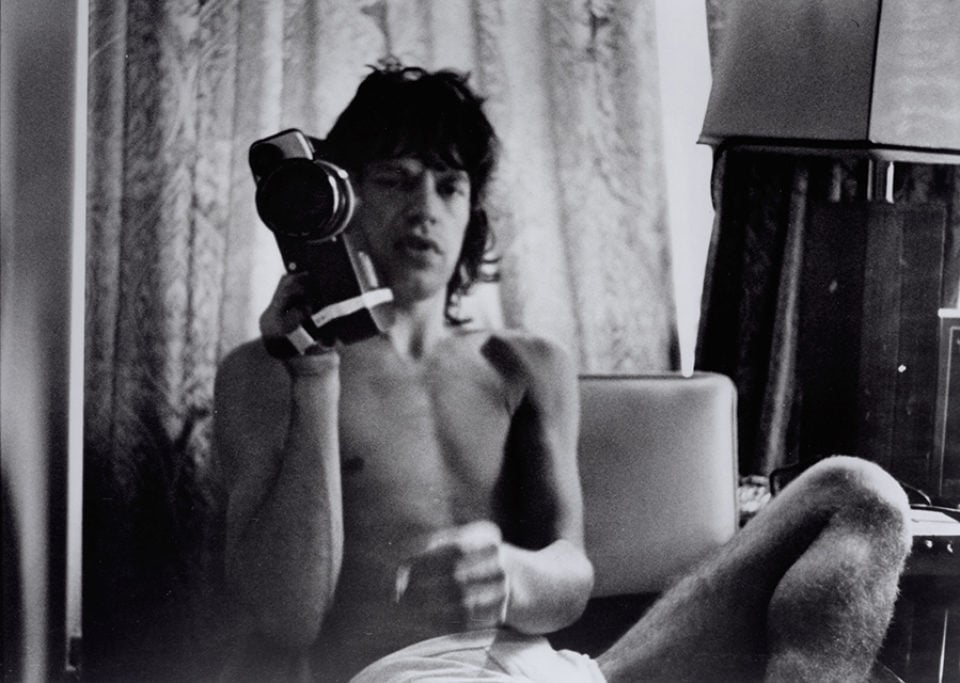
Mick Jagger in Cocksucker Blues (Robert Frank, 1972)
How did Candy Mountain come about, and why, after all these years, did you decide to do a scripted film?
Rudy [Wurlitzer] and I, we’ve been friends for quite a while. We’re sort of neighbors up there in Canada. We made two films together. And then the idea was that I would like to make another film, a very simple film, which is based in part on some biographical facts of my life and so on. That was about four years ago or so. So I asked Rudy to write something in that respect, some simple story, you know, of living here and going up to Canada, that has a connection with me. And actually, that was used as a text for that photography book [Robert Frank (1976) (Pantheon Photo Library, 1985)]. And that was the beginning of the film, really; that was the basic idea.
The text that said you wanted to make a film that was a journey from the center of one culture to the margins of another?
Yeah. So it had to do with living in two places. So it came out of that, and at that time I also worked on a video called Home Improvements, which also had elements of what is happening in my life. So the idea was just to make a short, simple film. But then it developed. Rudy wrote more about it, it became a regular script, and then we met some Swiss people by accident—Ruth Walburger, a producer, whom we met in Zurich. It was a total accident. She had a friend who wanted Rudy to write a script, and then Rudy said, “Well, I’m working with Robert on this…,” and she knew about my being Swiss, so that’s how it came about.
What were the other two films that you worked on with Rudy?
I worked with him on Keep Busy (1975) and Energy and How to Get It (1981).
You directed those films and Rudy wrote them?
Keep Busy, I probably had more to do with directing that. And the other, Energy and How to Get It, was a cooperation between three people, Gary Hill and myself and Rudy, and we sort of split it up. Keep Busy was an almost unscripted film—not much of a script—but Energy and How to Get It had documentary footage in it. We started to make a documentary on a guy who was interested in electrical storms to harness lightning and produce electricity. It’s called ball lightning. We found this guy in Nevada somewhere and started to make a documentary on him, and then later Rudy submitted more of a script; it could be done as a bigger film. We got money from PBS to do it.
How did you feel about working on a more scripted film?
It’s, like, if you work on a scripted film like this, you move in heavy artillery, you know. To kill it. I mean, you have a target and you’re not going to run around with this little air gun. You really move in with this heavy equipment. And you kill it. I mean, you hit it, you know. You are going to be on target. You know what you have to do with that heavy equipment. So I think the most difficult thing was to realize that there could be very little improvisation. I mean, you have to stick to the shooting schedule, you had so much time, you couldn’t change the camera angles. After a while, I settled for it, and it’s one of the things that I don’t know… I wouldn’t do it like this again. I would refuse to settle for it that way.
What would you do differently?
I would try not to move in that heavy machinery; I would like to limit it. It could have been more limited in this film. But somehow, it got bigger and bigger all the time, and there was no way to stop it. And I think it was detrimental to the film. It also came about because of the music; it made it even bigger, the fact that there were a lot of musicians involved, and music. So the machinery became even heavier, with all this sound equipment. And I think it would not have had to be like this. That’s my strongest feelings toward the film—that it was like a hype.
Did that come from the business? Or did the script warrant it?
It came from raising money, you know. You have to say there’s going to be a record, there’s going to be… In order to raise money, you have to say what you do, and you have to say, “They are the musicians, and they’re going to play, and we’re going to have a lot of music and we’re going to do it right. We’re going to have it recorded right.” And so it gets bigger and bigger. And actually, most of all that big sound stuff that was used in the film, you have to pay a lot of money for. In the end it didn’t get in the film. It was cut out.
You co-directed with Rudy. What was that like? Who did what?
That’s very difficult. That’s like making a baby, two people making a baby. You can imagine. Actually, I think that is a very good comparison. I mean, a film is a little bit like making a baby. You know, the film is made and it’s lying there, and you say, hey, it’s got red hair, or it’s fat, or whatever. But you’re happy it’s there. It’s alive. It talks. You know, it’s got color. So co-directing was a little bit like, you know, you make the baby together. And that doesn’t really work that well.
Why?
Well, I think that Rudy was very good at the content of a scene, and the lines and what’s behind the scene. And there was no rehearsal. I came in front of the camera and decided we shoot the scene in a certain way, you know, these three camera angles and that’s what I want. And then I would watch [the actors], how they move, and I would say, “Do it differently.” Sometimes I would say something about the words, but most often it was mainly a thing about how to deliver them or how to space it, the spaces in between. It was a thing of movements.
Why did you choose to make a film that was autobiographical?
Well, it’s all fictional. It just has moments that I knew very well, what it meant to me, so that I could tell the actor more, how I thought about it, how I felt about it, having gone through the situation, thinking back about people from New York who want to hold on to me, who I’m a valuable property to, you know, make money from. So I could explain to an actor the feeling that I had about that what I felt. I felt very secure in that. So when these moments come about in the film, I feel good about it. I feel there’s like a little glimmer of the truth there, you know?
Why did you portray America with the oil fields and the women in housecoats, and the television game shows?
The industrial landscape of New Jersey? Well, I think because it’s a road movie and it starts out in New York, it moves you out of the city, through the industrial part, toward the Canadian border, where things get quiet and the landscape would become more empty till we’re in Canada, where it becomes very peaceful and empty, and slow. That was the idea.
You first became interested in America through country music—and music is so much a part of Candy Mountain. Why?
Music is very interesting. Music is also very entertaining. Music is powerful in films. I don’t think that’s what makes America interesting, though. But I think that if you can use it right and use it right in the film, it will help the film a great deal. It really makes it go, moves the film.
In The Americans, there were several pictures of jukeboxes, and this is a film about musicians. What role does music fill for you?
I don’t see any connection between my photographs of jukeboxes and the music in this film. I made another film a long time ago, About Me: A Musical, and I used a lot of music in that.
You know, sometimes I get very tired of words. Words get kind of boring. Music is more uplifting. It’s lighter, it’s easier, it’s faster. Sometimes it’s wonderful to have music, and then silence, and then words. I think it’s a good combination. So the idea in this film was to use musicians more as actors. You know, they act, but they’re musicians. So we have Dr. John—he doesn’t appear at all as a musician. In the final scene, we had a big number where he plays music. And we didn’t use it. So it was interesting to see how musicians–like Buster Poindexter (David Johansen)—how they were as actors. Or Tom Waits, acting. And then we had a little bit of music with them in it.
What did musicians as actors bring to the film?
Well, first of all, when they play music, they’re musicians, they don’t have to act. I think it’s more interesting than the other way around, where you use an actor, and he’s not a musician. So I think that was very valuable, although that wasn’t as complete as we hoped it would be.
And why Joe Strummer, a musician on the outskirts of British culture, and Tom Waits, a musician on the outskirts of American culture?
Well, we knew them. I knew Tom Waits, and I had a connection with Joe Strummer and, you know, these are people who are sympathetic to the project and who wouldn’t want to do it just for big money. They liked the project.
In the film, there is a lot of swapping cars.
Well, because [Julius] gradually, as he sets out on the trip, has a girlfriend, loses the girlfriend, loses his car, and gets another car. He ends up getting there and finding the guy, and has nothing in the end.
The Americans in the film always wanted to make the deal where they come out on top. The closer he got to Elmore, the more Julius had to trade down.
Well, it’s sort of a metaphor for how, in America, money is very important. Like Dr. John [Elmore’s son-in-law], his fury is that he lost out [on the possibility of making money on his father-in-law’s guitars]—that he had nothing. I think that’s very American. To be left out of a big deal. Julius’ fantasy of making this big deal, coming back with this suitcase full of money. You know, it’s that kind of dream. The closer he gets to it, the less likely it is. Or the more he loses and the more he sees that it’s really not going to happen.
Why did you choose to make a road picture?
Well, I think that’s very simple. It started out from this little plan to make this little film which goes from New York to Canada. So how do you get there? The first version of the script, [Julius] even went to Europe, to Berlin, to look for [Elmore], and then back to Canada. Well, the fact that you move in a moving picture is very good, you know. You keep going. And I think one of the good parts in the film is [its editing]. It continuously moves. Once he leaves New York, Julius is really on the road and doesn’t stop until he gets up there. And then he’s up there and he goes right back again…
I liked the Wenders film a lot, the one in Germany he made, which was, you know, a road picture, with the repairmen of the projectors, Kings of the Road (1976). Well, that has a sort of connection to it. This is an American story. I think Rudy likes [the genre] a lot. He did Two Lane Blacktop (1971), which is a road picture.
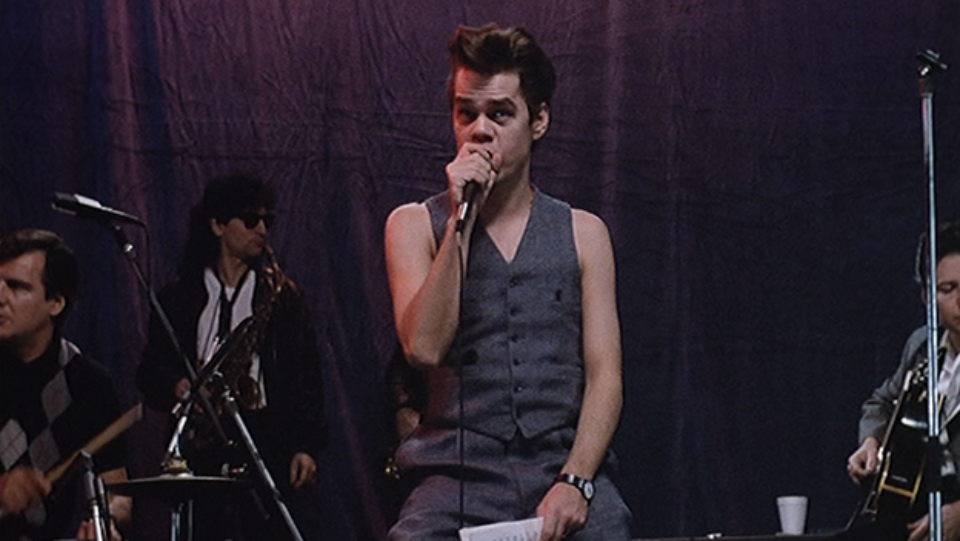
Buster Poindexter (David Johansen) in Candy Mountain (Robert Frank and Rudy Wurlitzer, 1988)
“In making films I continue to look around me; but I am no longer the solitary observer, turning away after the click of the shutter. Instead I’m trying to recapture what I saw, what I heard, and what I feel. What I know!” –Robert Frank (Pantheon Photo Library, 1983)
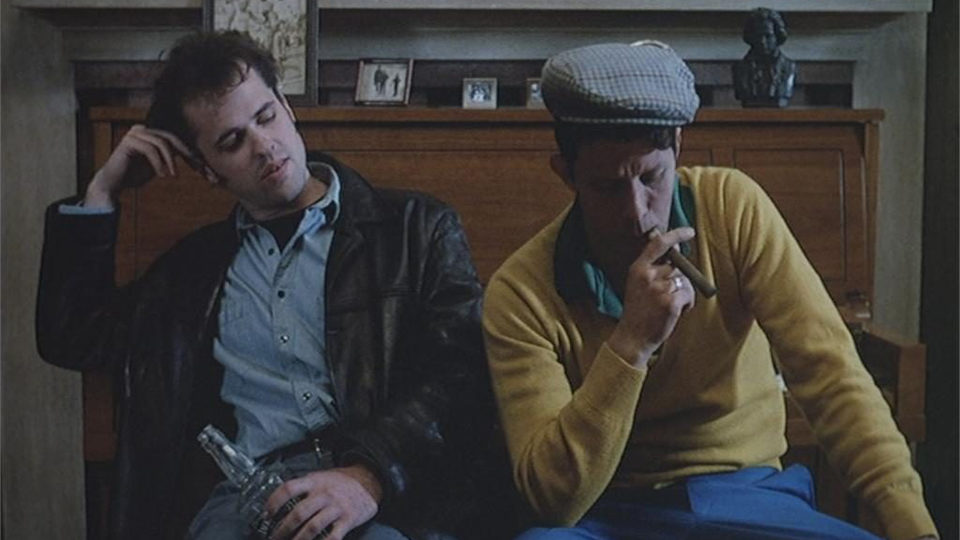
Candy Mountain (Robert Frank and Rudy Wurlitzer, 1988)
You went from a still photographer to a filmmaker. It seemed so easy for you.
It’s easy? It’s not easy at all. It’s a struggle. I think it’s very different to be a photographer. Because in photography you are alone. You don’t need anyone else. Whereas in film, there are a lot of people around you. You have to explain what you do. The other films I did, most of them were really not very well planned—often without a script—which is the hardest way you can make a movie. It has its wonderful moments, but as a whole it’s much more difficult than to do a scripted film.
Did you have specific ideas in mind before you started, or did you construct your films in the editing?
Well, like Me and My Brother was something that just went along, that changed as I went along. I started out to do a film about a poem of Ginsberg’s, and it ended up to be a film about Peter Orlovsky’s brother, whose name was Julius. So it continuously changed. Then you sort of focus on this person. And by what happens to him over a longer period of time, the film changes. Or in this case, he disappeared, and you find something else to take his place. But it’s made like that. And then you see it didn’t succeed when you see the footage, and then you try in the editing to put something together. And I think that was a mistake. I edited for a long time on Me and My Brother. And I should have just accepted what was there and not try to make it into something else. I think that’s what I learned from that film. I really tried to twist it into a shape that I felt the film needed in order to be a full-length film. And now, if I was to re-edit the film or redo it, I would let it be the way the footage came out and not try to over-edit it or force it into telling a specific story. I mean, I would have more confidence in the material than I had.
Did Julius in Me and My Brother have any connection to Julius in Candy Mountain?
No. No connection.
You worked with Sam Shepard on Me and My Brother?
Well, Sam Shepard wrote just one little scene, and then Antonioni asked him to do Zabriskie Point (1970). Sam Shepard left for the glory of the glory.
Why did you choose to become a filmmaker when there were other media you could have chosen?
If you are a photographer for that long… You have film, which is a negative, so you find there’s a kinship there. I can’t paint, I don’t want to write poetry, I’m not a writer. So you just continue making images.
Your newer stills contain serial images.
That’s a direct influence, I think, from the movies, once I started to make movies. I certainly didn’t think about the single photographs anymore. Not very much.
And how about using words with the photographs?
That also comes from film. Well, it’s a combination, but it all comes from being forced to explain something, being forced to communicate your ideas to the people you work with in films. So then, when I went back to photographing with the Polaroid camera, it didn’t leave me. I wanted to communicate something else—not necessarily to explain it, but to communicate something else with the photographs. The picture in itself didn’t mean that much to me anymore.
Why a Polaroid as opposed to 35mm?
Because a Polaroid was immediate. You had, just like in any other photograph, a negative. And then I could immediately put on the negative forever—I mean, scratch in, in a way, to destroy the image—writing something over it that would be spontaneous, and that would be an expression of what I felt, the moment or the time I took these pictures. Usually I take eight pictures together on a cassette. It was always between two and eight. Never more. And very seldom one. And if it was one, then it had words in it.
Do you think Polaroids, which are so immediate, also came out of your interest in film?
No. Film is not at all instantaneous because you have to bring it to the lab, it has to come back. And it’s not the same as video. In video you also get it back right away, but you can’t do anything with it. I mean, it’s electronic. But here the beauty was that you had a negative, just like any other negative—immediately—and you could see it and then you could print it much later. Then you could change again. But the most important thing was to be able to express right away, on the film, on the print, how you wanted it. And later on you went to the darkroom and sometimes it didn’t work. But sometimes it worked, that spontaneity of expressing your feelings.
Which of your films has been the closest to you?
Well, I like Life Dances On in a way, because it deals with three people I knew, and I like each one. And it talked about the friends I had, and my daughter. That was the most personal to me, but it was very simple. And it had a certain truth. Reality.
It was about Danny Seymour and Andrea…
Yeah, it was sort of dedicated to them. But also the film took three characters then—my son Pablo, who lived in Vermont at that time; and Marty Greenbaum, who was an old friend who was struggling to be an artist; and Billy, a bum I got to know on the street. And I felt that each one of these three people was walking on the edge. And that’s what made the film. And it also had these references to my daughter, and I was always in it. It was always me who forced these people to talk, who made them talk about themselves or expose themselves in a way, I didn’t hide that interference and that brutality that pushes a filmmaker to get something out of people…
Probably I didn’t know, then, how I fit into this, how I found myself in the center of these three people with whom I had different relations. I never said that before, but I think that’s what interested me–pure intuition, I didn’t plan on this. I didn’t make a point of this in the film. But it comes out sometimes stronger than at other times. I think now if I would make a film, I would be much too conscious of it.
Me and My Brother had similar elements in it, but I think it’s trying too hard, you know, to be a real film. It was also in part because I was given money by some people who then immediately demanded that I do it in color. But I liked to work with Joe Chaiken. That was a very good experience. And I learned on each film. I mean, that’s a very wonderful thing, in films, if you are really almost obsessed by making a film. You know, as soon as the film is finished, that it isn’t made according to a scheme or to a formula. I can see what is wrong, or what I could have done better, or what I should have done better. How I don’t want to make a film like this anymore, but change. That’s very interesting. It doesn’t happen like this in photography. It just doesn’t come up for me. It just doesn’t have that challenge.
Is that what keeps you going?
Absolutely.
The photography at one point was much more certain. You had a reputation, and you could have kept on going—which most people would choose to do. You chose to do something that was less certain. It’s much harder to succeed in film.
Well, that also gave me the impetus. I want to risk things in film. I don’t want to go middle of the road. I’m not interested in making a safe film. That’s not the point anymore for me. I don’t even want to make money in films. I mean, I’d like to get paid, I’d like to be able to live. But I want to make a film that really takes risks, that expresses some of my lifestyle and some of my experience.
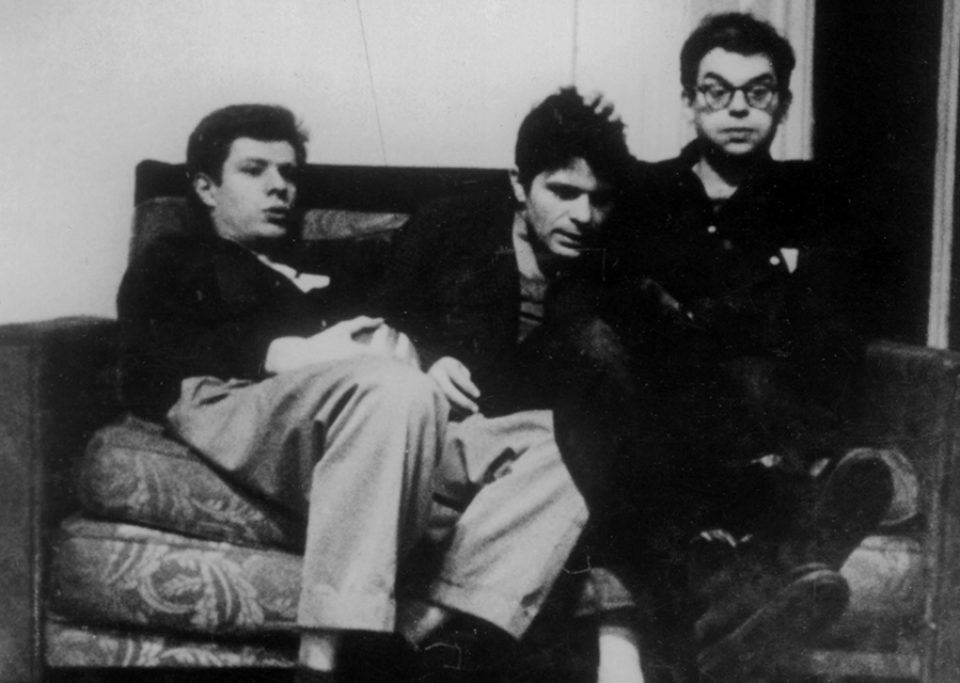
Peter Orlovsky, Gregory Corso, and Allen Ginsberg in Pull My Daisy (Robert Frank and Alfred Leslie, 1959)
How have your films and your ideas about film changed since Pull My Daisy?
On each film, you say, I’m never going to edit two years on a film, I’m never going to work without a script…After this film, I’m never going to work with the heavy machinery like that. I’m not going to have 25 people around me when I make a film. It’s not necessary. You can do it with less. We were really very careful to keep the dialogue, to really stick with the script; it was the schedule, it was like an airline schedule, the plane leaves and you’ve got to make the plane, make the connection—I would not be so slavish about this anymore. I would risk more, to throw the schedule away, to depart from it.
You stayed away from structure for a long time in your work. Was that to take those kinds of risks?
Yeah. And here I felt everything became secondary to the structure of the film. No spontaneity. You preserve that structure. You absolutely don’t want to destroy it. Now I would feel, well, fuck it. I don’t have to. You try to shoot the film in sequence, which we mostly did. We wanted it, and I thought it was very good and much easier. But in a strange way, it made you really more a slave to the structure. If we had not shot it in sequence, it would have been easier to say, well, we don’t need this, we can do it differently.
Why did you choose to shoot the film in sequence?
Well, because it’s a road picture. It had to start here; because here it’s fall and up there it was winter.
Do you see any parallels between the social scene at the time of Pull My Daisy and the downtown New York scene today?
No. Unfortunately, I don’t see any. Because in New York, it becomes more difficult to operate, to be free, because of the tremendous amount of money that you need to exist in New York. And I think it’s not that open. People know too much now. You know, they really want to be sure to succeed somehow.
And back in 1959 it was much freer?
It was much more open. Everything was possible, everything was new. But now that spirit doesn’t exist. Things are not that new. If they make new galleries on Avenue C, that’s a new location. But it’s a similar game. But in the late ’50s, early ’60s, there was a tremendous optimism to bring in something new, to make it different. People are much more careful today. They go to school for many years, they prepare everything very carefully. They know exactly what they want and how they want it. Because it must fit into this category, and this is where they have to fit in. Because if they don’t fit in, they don’t make it. They’re left lying down the road. And I think that’s a very strong feeling today, also with younger people, that they have to fit. None of us had that feeling. You didn’t have to fit. It was okay.
Why did you leave Switzerland and why did you say it was difficult to be Swiss?
Well, I think what I meant probably was, it’s a small country. And to stay in Switzerland as a Swiss, you know, you really are in an orbit that you can’t get out of. I think I meant it that way. And if you leave the country, you go to America. I don’t know what other country I would go to. Still, I think the U.S. is the best country for me.
In what respect?
It’s free. People let you do whatever you want to do. You can live your life any way you want to. Especially in New York. I really talk about New York. I talk more about New York than America. But it’s also the bigness of America. You can leave. You can go to Montana.
Here, nobody gives a fuck what you do. It’s wonderful in New York, in the subway. There’s solidarity in some ways. And I also feel that, in a way, it’s more democratic. It’s depressing to see how many people are poor. And everyone seems to get more and more so. I really have become an American in that way.
Why did you leave for Canada?
I didn’t want to die in New York.
Why not?
It’s pretty horrible. It’s a very depressing place to get sick. Actually, one morning I woke up in the loft and I said, “Jesus Christ, I could die here in this loft, you know.” I always lived near the Bowery.
But I’m still curious why you didn’t want to die in New York, what was it about New York?
Well, you pay a high price to live in the city. It wears you out, it wears you down. So after living here 30 years, you get to know it, it gets in your system. And you know that there is something else.
You can go back to Europe. But you can also go to a peaceful country that’s vast, and you can go back to nature. I never liked to go in the middle of the road, and so you go to the edge of the continent.
I liked the cold and the winter. I liked the people there. They have roots, and they are very simple people. And very decent people. And they also leave you alone. There’s so much space there, and you come and they watch you. They know that you’re going away, you can’t stand it after a while. And so it’s quite wonderful. It’s so beautiful. The landscape. It’s so quiet.
How are the Canadians different from the Americans?
How are they different? Well, they are much less aggressive. They are calmer. They’re not afraid to be run over, there’s not so much pressure there. I’m talking from New York to Mabou. I’m sure there’s somewhere—Duluth, for instance—where it’s very different. But also I went to Canada not so much because I loved Canada, but because I simply could not afford to buy land near the water in America. I didn’t have that kind of money.
I’ve read a lot about the importance of spirituality to your work.
Spirituality? I can’t answer that. You have to be religious? I don’t know. I think in New York it is really important for you to believe in yourself, for you never to give up this belief. And in New York it’s sort of easy to reinforce that, because artists are egotistical people. They really have to look out for themselves, always. They really think about their work, their imagination, their dreams. They put it down; they are able to show that. So New York is very strong; it’s very powerful to reinforce that feeling and to make it even stronger. And I think, when you go to a place like Canada, where all of a sudden it’s empty and there’s nobody standing behind you, nobody standing in front of you, and no feedback, then you’re alone. Then you begin to watch nature, to watch…You watch something else, and you become a better human being.
Well, after making films here, when I go to Canada, I feel much better. I look at myself as almost a better person. I’m the same person there as I am here, it’s just that this is an inhuman place.
Why do you feel an affinity for the odd man out?
I think it was my choice not to want to belong to any group, be connected with any group.
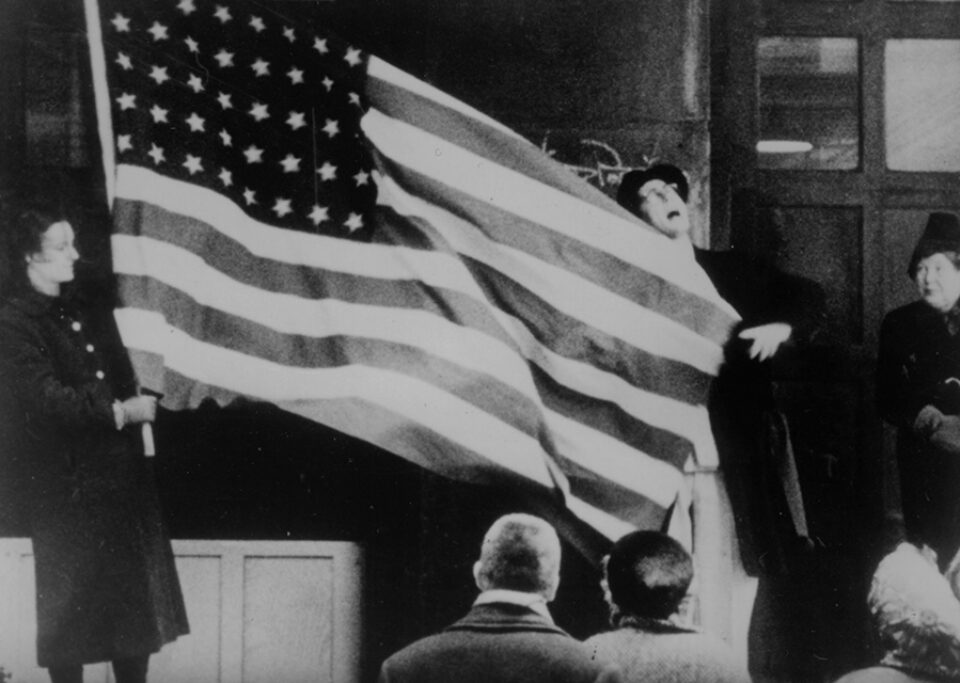
Pull My Daisy (Robert Frank and Alfred Leslie, 1959)
How do you feel about getting older, and how has that affected your work?
I’m 62. And I’m very concerned with getting old gracefully. My main concern now [laughs] …
Now, as you get older, it’s a more peaceful feeling, because you know that it’s going to be over in the next ten years or so. It’s okay. You just try to get your stuff in order. That will take a long time. You don’t have to climb up the ladder anymore. It’s an awkward feeling, but you don’t have to do things anymore the way you did before. It’s a more peaceful feeling.
Any ideas for another film?
No. No ideas. I don’t have any ideas. But I’d like to find them, I’d like to go to a place where I can have a choice. It’s not like going shopping, you know.
You have a book of photographs coming out.
I’m going to be republishing a book called The Lines of My Hand (1989), in which I will add all the other stuff that I’ve done. Which is sort of the only other book I want to do. I don’t want to do more books.
That’s it.
Yeah. Well, that’s a lot of words here.







